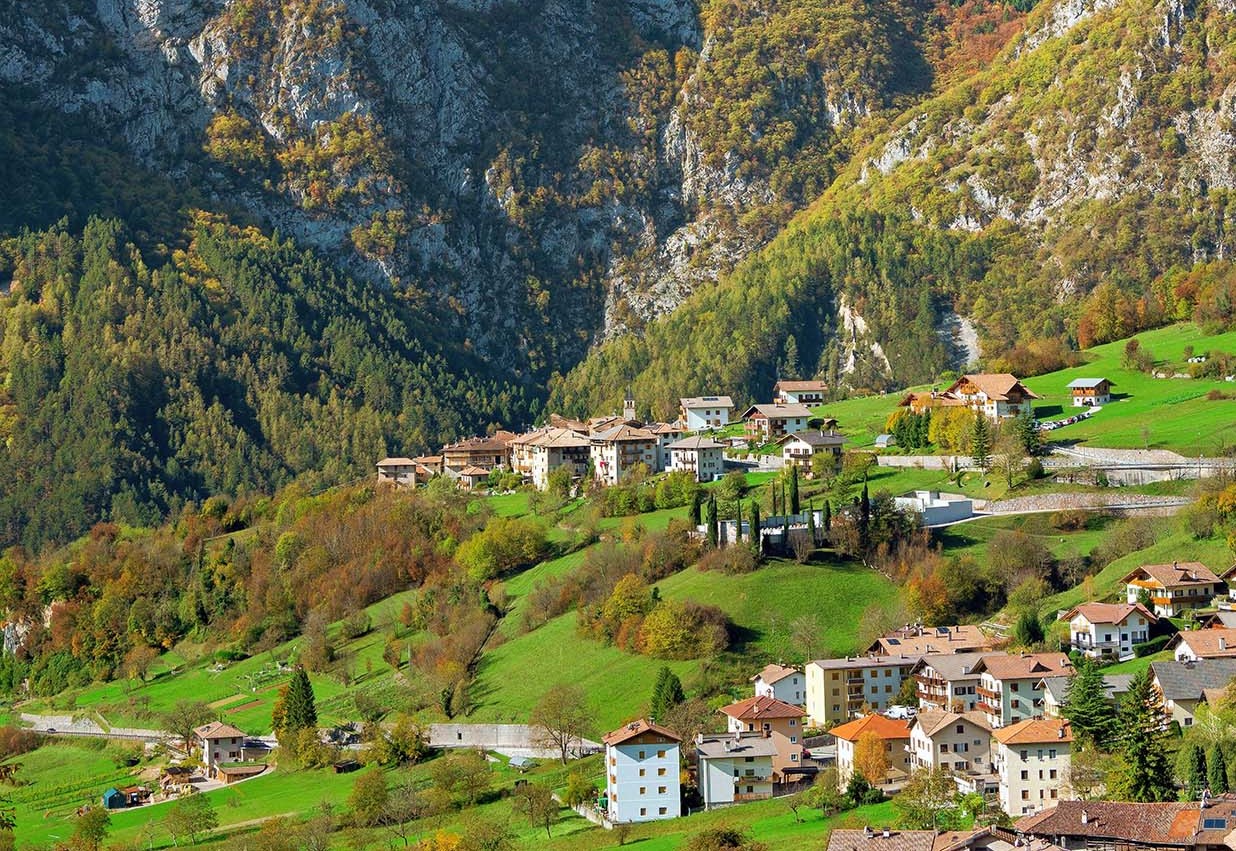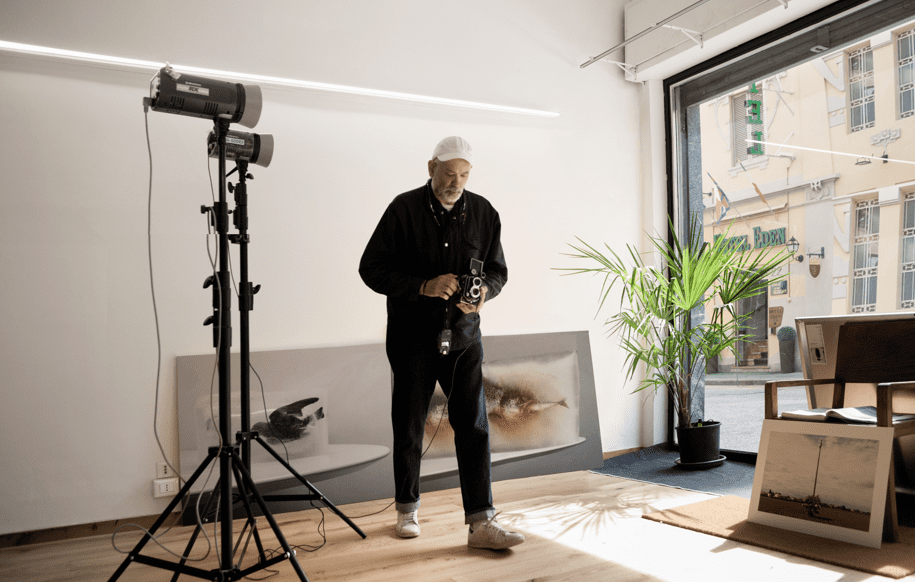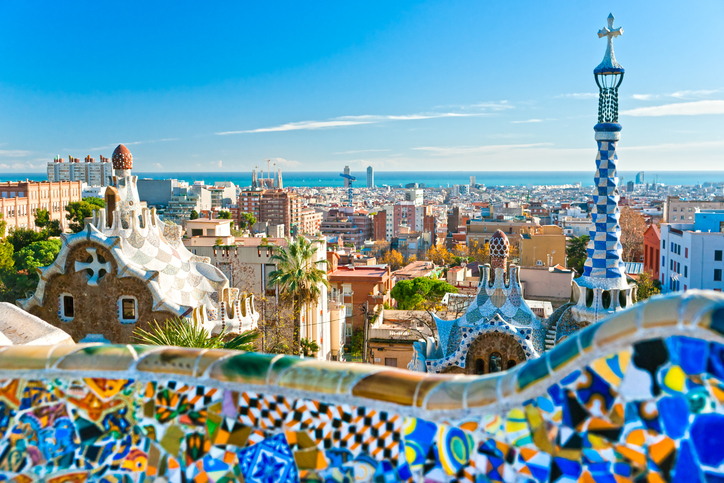It was an abandoned rock. Today it is the rediscovered cliff: “A project of all and for all, to revive a space that is a collective heritage”. To speak is Simone Elmi, mountain guide of San Lorenzo Dorsino as well as president of the amateur sports association Open Dolomites. “In the 1980s, many children learned to climb this wall. Then, having become private property, it was closed and dismantled, to the point of being renamed the forgotten rock” .
Over time, nature has inevitably reclaimed it, “but nostalgia and the desire to share this place have revived its history,” Elmi continues. “Our association bought the land, reinvigorated all the historic roads and created new itineraries thanks to donations collected through a crowdfunding campaign. It is a unique experience in the world, because it is the first private rock made public and free thanks to the commitment of those who contributed to the revival project.”
San Lorenzo Dorsino It is a charming village perched on a terrace at the entrance to the Ambiez Valleyfront door to Brenta Dolomites, In Trentino The valley, nestled between steep walls, offers visitors a precious testimony to the presence of the sea from which these mountains originate and of the organisms that populated it: to be sure, you just have to reach the Fossil cemetery, plateau ten minutes walk from Hunters' Refuge (cell. 331.84.82.279).
Obviously, the forgotten rock also has the same genesis and is in fact composed of conglomerate, a rock composed of stones and sands from the seabed. “Now the wall is open all year round,” Elmi points out, “and is suitable for both beginners and experts able to tackle level 8a,” which requires strength and skill. Alpine guides are available for those who want to learn the basics of climbing or improve their technique. “And since one of the principles of the Dolomiti Open is inclusion, the natural rock gym can also be used by disabled climbers, who can try it out in complete safety.”


The Forgotten Rock San Lorenzo Dorsino: a gym for everyone
The cliff overlooks the Sarca River Gorge and a spring flows below. In the meadow at the foot of the rock face you can picnic while admiring those who climb, perhaps after buying the organic products of Patrizia Bordati, owner of the company, on a stand strategically placed in the area. Mother Patty's Garden.
The area is equipped: thanks to the water from the spring, toilets have been created for the many visitors to the cliff. “But the work is certainly not finished,” comments Simone Elmi. “There are now around thirty routes to climb, the aim is to double them. To do this, we have launched a new crowdfunding campaign and, with the profits, we would also like to create a playground right at the foot of the wall.”
Operations like this are fundamental to guaranteeing a future for the intermediate territories between the most famous and touristic Dolomites and the crowded and unattractive areas of the valley floor. Mauro Varotto, professor of geography at the University of Padua, defines them as “mid-mountains” in an essay published by Einaudi: “They are not just an altimetric reality,” writes Varotto, “but places that unite the past and the future, relaunching an idea of living that reconciles increasingly strict climatic demands, new social energies and virtuous models of mountain management and development.”
SEE ALSO: Wonders of Trentino Alto Adige: 20 places to absolutely visit during your vacation


San Lorenzo Dorsino: the widespread village of the Val d'Ambiez
It is the perfectly centered photograph of realities such as San Lorenzo Dorsino, a sprawling village born from the union of seven villas, that is, seven small hamlets. Each still preserves distinctive characteristics, jealously maintaining its own patronal festival and its own small church, which sometimes houses precious works of art.
Like the colorful frescoes made by the Bascheni, a line of itinerant Bergamo painters active in the valleys of Giudicarie between 1450 and 1550, who enrich the Church of San Giorgio in the hamlet of Dorsino. Or the 17th century gilded wooden altar, which ennobles a chapel of the Church of Saints Rocco and Sebastiano in Pergnano.
Each villa also has its own stone fountain, also considered sacred because it is the house of water, the source of life. A walk through the silent cobbled streets lined with dry stone walls allows you to admire ancient rural houses divided into several floors, where each level is dedicated to a chapter of peasant life: the cellar, the stables for the animals, the men's rooms and, on the top floor, the covered farmyards where hay and cereals were dried.
U-mano landscapers and craftsmen from the village
In some of these traditional houses today live creative people who have chosen to focus everything on their passions and technical skills. Among the most intriguing stories, there is that of a group of women who got back into the game, proposing what they know how to do, and with their example they influenced other women: it is not yet an association, but in the meantime it already has a name, Landscape of the hand of man from the village.
It currently brings together around ten artisans and artists: among them the wood designer Claudia Bosetti, 24 years old, who creates with her hands bowls and storage lamps, earrings and bracelets, necklaces and other jewelry: all in wood. “I learned to work it since I was little thanks to my father and my brother, both carpenters,” says Claudia, who does not hide her love for this magnificent material.
This is how creations are born that renew the artisan tradition with an innovative design. Of course, each object is a unique piece. “I use pine,” continues Claudia, “a very fragrant wood rich in beneficial essences. Today it is used in hotel rooms and saunas, but our grandmothers already used it to build cradles for newborns and filled mattresses with its shavings, because it helps to rest better.” In addition, the pine is obtained from the Swiss pine, with its well-known balsamic properties.
Other women from the village's Paesaggio U-mano, other stories. Like the one about the felt Ierta Flori, She too is fascinated by the material used in her works: “Felt was born by chance,” she says, “when shepherds realized that the wool lost by their sheep at the edge of the paths, wet by water and trampled, became a magnificent waterproof material.” Her creations are playful, like the vases of flowers in a thousand colors or the tender plush hearts.
Valentina Franchi32 years old, is rather a self-taught painter, enchanted by colors since her childhood: author with a very personal style, she hand-paints glimpses of the city and other ornamental motifs on magnets, tiles and clocks. All, always, in respect of tradition, using local materials but with imagination.
READ ALSO: Brenta Dolomites: the treasures of the Trentino Natural Park


The Il Ritorno farm
The company also follows this spirit Anita Ciccoliniwho practices biodynamic agriculture by growing medicinal herbs and fruits, then transformed into infusions and cosmetic products. The returnhis farm has obtained the prestigious Arca (Environment Comfort Architecture) certification, which guarantees the quality of wooden constructions: only local species, such as larch, were used for its creation.
Here, the surprise is to be able to taste cocktails with the scent of flowers, mixed with products grown on the farm, to be enjoyed possibly accompanied by a few slices of Banale's citySlow Food Presidium.
This is a sausage that was born in the second half of the 19th century, when poverty led to the creation of a sausage with little meat and a lot of white turnip, which ripens in the fields in autumn. The same ones where pigs are slaughtered.
Once again, tradition and respect for the environment go hand in hand: a lesson from the past that should not be forgotten. In fact, to stay alive. “A reality like ours,” confirms Simone Elmi, “will only have a future if it manages to maintain this balance.”




